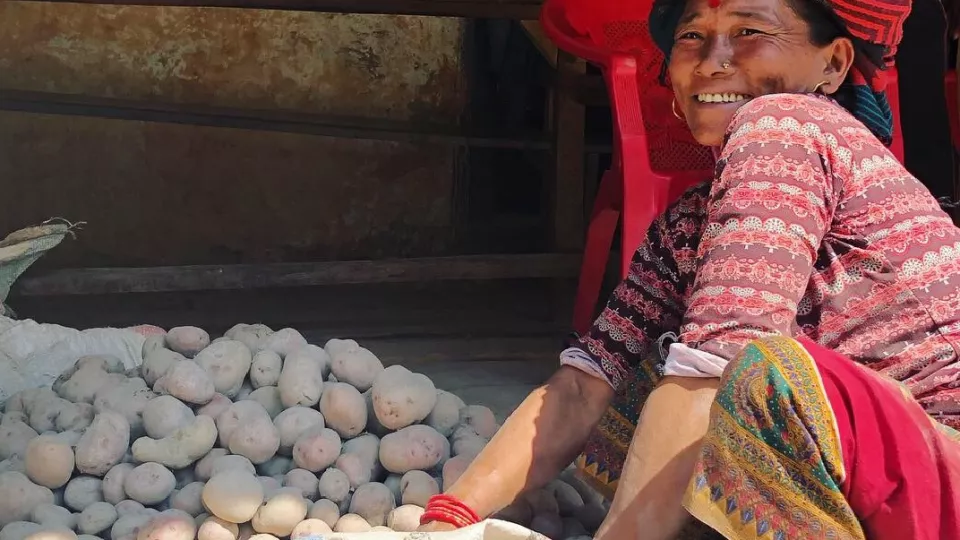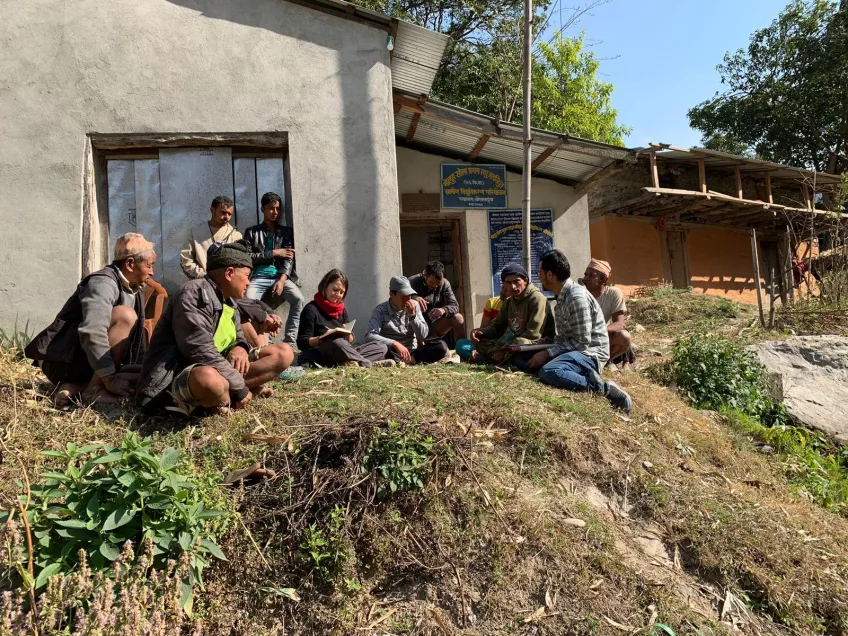– I’m interested in how collective action links to natural resources and renewable energy. How well can a community manage its energy sources while keeping the social cohesion?
Mine Islar chose to study Nepal since the country is known for its community governance, especially of natural resources. It is a tradition shaped by Nepal’s mountainous geography where access is difficult and communities might be separated from each other by mountains. It is also a country that is greatly at risk from climate change. The flows of rivers are already affected by change in rainfall, and in some parts, overflowing rivers have destroyed hydro power plants.
During her recent fieldwork, she visited three communities in Nepal with different socio-economic powers. She asked the villagers general questions about changes in their lives when electricity arrived to their village, and specific questions about their water supply, economic status and collaboration between villagers: who gets access to energy when the supply is low? How does the community make decisions collectively? How do they solve conflicts?
– In Nepal, most communities don’t rely on the state or other organisations to manage their hydropower plants. That’s why I'm interested in finding out more about collective action, and what role collaboration can play in sustaining common pool resources such as energy, and for social cohesion in the long run.
She is also interested in the communities’ perception of climate change. What type of climate related impacts do they see since the hydro power was installed around five years ago? And do their perceptions align with reports on how climate change has impacted the region?
Preliminary findings of the project
Based on the input from the communities, Mine Islar has already identified some interesting results.
One finding is that villagers agreed that there is a decline in water quantity of their river and thus in energy supply. However as they say, not every change is about climate here. One upstream village has built another small-scale hydro power plant and diverted water from the river which have a direct impact on the water quantity downstream. Apart from that, farmers are aware of climate change impacts through changing rainfall patterns which has affected their harvest but they don’t consider themselves to be a vulnerable group. As one of the village women said: “We have each other here. We rebuilt this village together after the earthquake just a couple of years ago”.
Another preliminary finding is that there is a causal link between benefits derived from renewable energy and migration. Households who have a family member working as a migrant worker in the Gulf countries seem to have more knowledge of different technologies, such as grinding mill machines which they can use the electricity for. Meanwhile, households whose only income source is local farming or husbandry only use the hydro power for lighting and for their mobile phones.
Mine Islar thinks that this can create injustices within a community, especially from an energy justice perspective. In one of the villages, a community group said that they already take measures to prevent conflicts that may emerge from economic differences. They agreed that the community first needs to give permission for any new technology that is going to be introduced to the village. For example, the village has placed a grinding mill machine in a common area so it can be used collectively. The mill owner gets 10 percent of the grinded maize and rice from the villagers as a compensation for his investment in the equipment.
The next step for Mine Islar is to analyse the results more in depths. Her end goal is to expand a common framework for energy resources, and contribute to community-based renewable energy policy development in low income countries.

